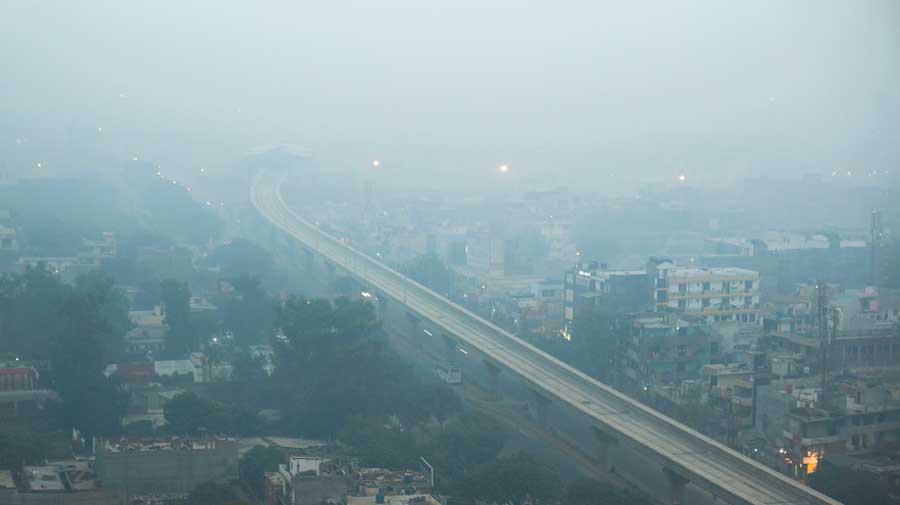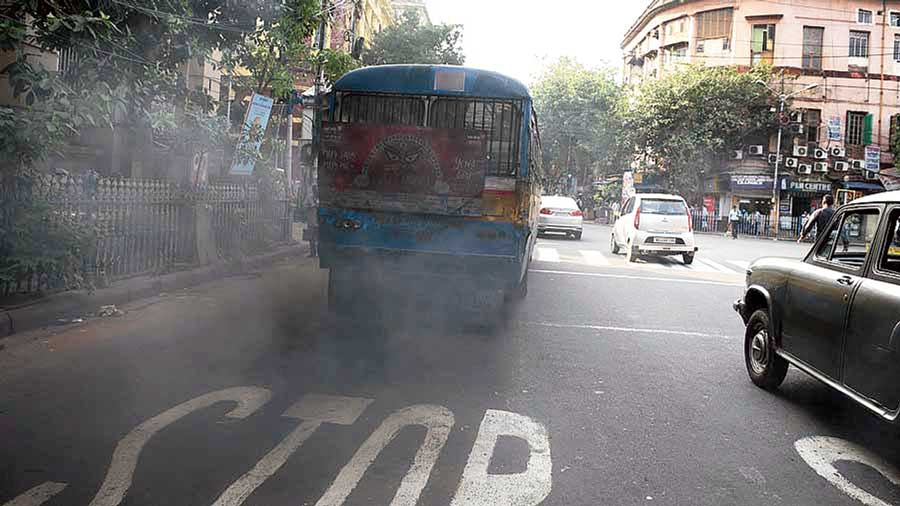Close to one-fourth of the load of the most toxic pollutant in the city’s air, PM 2.5, comes from beyond Bengal’s border, according to a recent study by scientists at Bose Institute.
The results of the study, titled “Sources of poor air quality and long-term variability over Kolkata”, carried out from 2004 to 2018, has been published in an Elsevier publication called Asian Atmospheric Pollution.
The Telegraph on Wednesday reported about an IIT Delhi study that has found that more than half of the overall PM 2.5 load in Bengal’s air comes from outside its border.
Bose Institute’s findings point out that during the duration of their study, the overall load of PM 2.5 in the city increased by about 50 per cent.
PM 2.5 particulates — 0.5 to 1 micron in diameter — constitute about 80 per cent of the total load. While PM 2.5 can enter into the lungs, finer particles can enter even deeper and cause more serious damage.
“According to our findings, about 20 to 25 per cent of the overall PM 2.5 load in Kolkata comes from beyond its border. About half of that is from Uttar Pradesh, Bihar and Jharkhand, while major part of the rest comes from Bangladesh, Nepal and states like Assam and Meghalaya,” Abhijit Chatterjee, an associate professor of Bose Institute, said on Wednesday.
He pointed out that in early March, a sizable proportion of PM 2.5 comes from Odisha and Andhra Pradesh. “The pollutant traverses to the city from Odisha and Andhra Pradesh through the Bay of Bengal and the Sunderbans, almost following the route of cyclones,” he said.
The study shows that extremely toxic and carcinogenic polyaromatic hydrocarbon (PAH) dominates the PM 2.5 coming from the Eastern Ghats.
The study has also found that over the years, waste burning and construction have become major contributors to PM 2.5 in the city, replacing pollution generated by vehicles.
“Earlier, from 2004 to 2009, pollution caused by vehicles used to contribute about 45 to 55 per cent of total PM 2.5 content in the city. Now, waste burning has turned into a major source of PM 2.5, accounting for 40 to 45 per cent of the load, followed by construction, which is responsible for 20 to 25 per cent of the pollutants. Vehicles come third with 15 to 20 per cent contribution. The gross pollution from vehicles has not reduced,” said Chatterjee.
“The IIT Delhi and Bose Institute studies both underline the importance of looking at transboundary and regional pollution for cities like Calcutta, rather than our conventional model of looking at the city in a standalone way,” pointed out Anumita Roy Choudhury, air pollution expert from the environment think-tank, Centre for Science and Environment.

